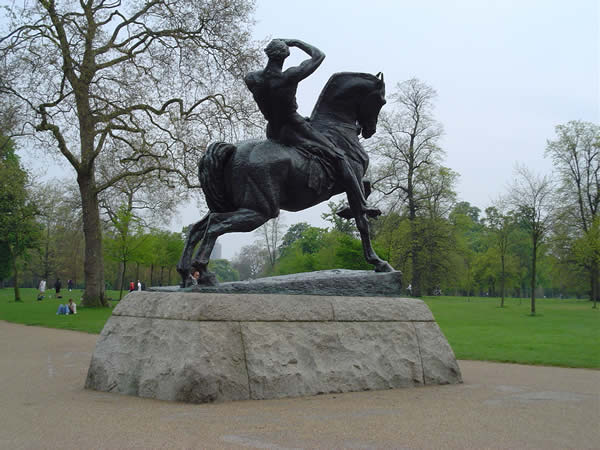This post is also available in:
![]() Deutsch
Deutsch ![]() Italiano
Italiano ![]() Português
Português ![]() Español
Español
KENSINGTON GARDENS
King William III purchased Kensington Gardens in 1689, the gardens became public park in 1841. Kensington Gardens spanned 111 hectares and originally formed part of Hyde Park. It was Queen Carolina, wife of George II, who in 1728 had the gardens modeled creating the Serpentine and the Long Water making it take on its current appearance.
Subsequently Queen Victoria made improvements and had the Italian Gardens and Albert Memorial built. Prince Albert, husband of Queen Victoria, died of typhoid fever at the age of 42. Shortly after his death, it was decided to build a memorial in his honor, the Albert Memorial, to manifest the British’s profound sense of bewilderment with his disappearance.
Today part of the park is dedicated to Princess Diana of Wales. In fact, the Diana Princess of Wales Memorial Playground is located here, characterized by a 7-mile course called Memorial Walk, which also crosses Hyde Park, Green Park and St James’s Park. The route was opened, in honor of the disappearance of Princess Diana in 2000.

HYDE PARK
Bordering Kensington Gardens, it is Hyde Park, one of the largest parks in London. It reaches an area of 140 hectares, the park is contiguous to Kensington Gardens. Henry VIII purchased the park from Westminster Abbey in 1536. The park remained private until James I allowed limited access to citizens. Charles I remodeled the park by creating the Ring and in 1637 opened the park to the public.
Close to the park are Kensington Palace, Royal Albert Hall and Royal College of Music, to the south of Hyde Park are the famous Harrods warehouses and the Natural History Museum, Science Museum, and the Victoria and Albert Museum.
How to get there: To reach Kensington Gardens, exit at Queensway, Lancaster Gate or Knightsbridge underground stations. To reach Hide Park, exit at Marble Arch, Hyde Park Corner, Lancaster Gate or Knightsbridge underground stations.
This post is also available in:
![]() Deutsch
Deutsch ![]() Italiano
Italiano ![]() Português
Português ![]() Español
Español
